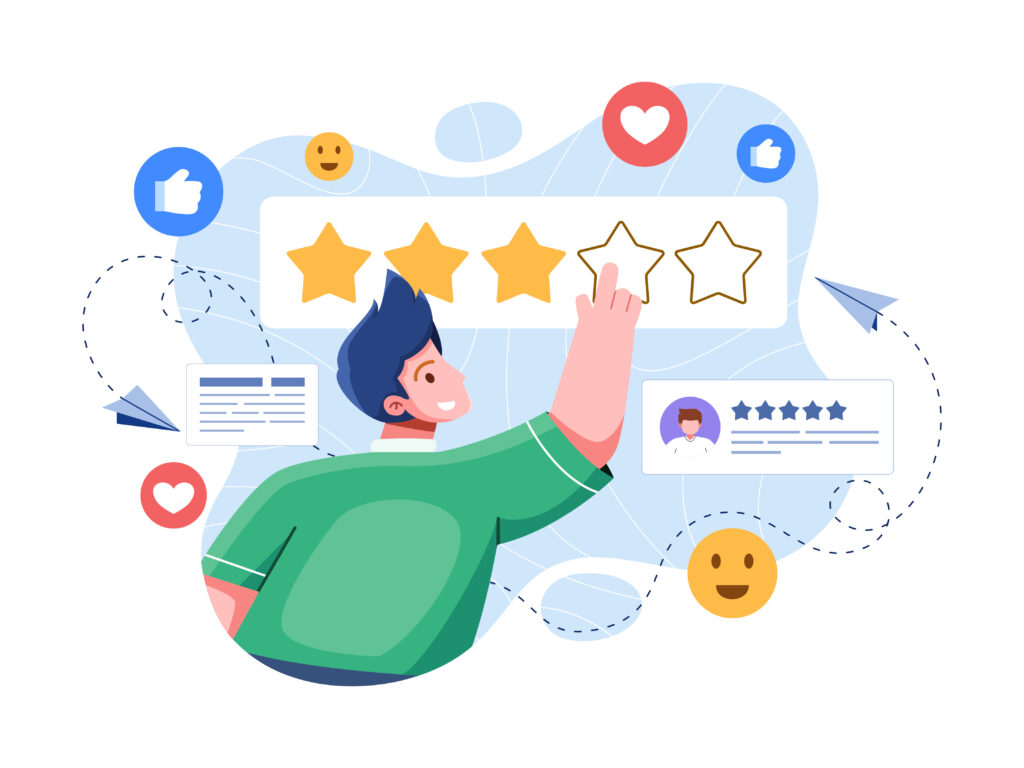Companies often focus their marketing efforts on driving traffic to their website. This is a critical component of lead generation. Any company that wants to sustain or grow needs a combination of SEO optimization to generate organic search and paid ads to bring in targeted traffic.
The problem is, what happens when a customer lands on your website? Companies can spend months executing an SEO strategy and thousands of dollars monthly on ads to achieve minimal results. To maximize results from your digital marketing efforts, you need more than traffic to your website; you need to optimize for conversions.
This article walks you through the elements of conversion optimization with specific tips about improving yours.

Tip 1: One Goal Per Landing Page
Have you landed on a new website and felt confused? You probably clicked on the link with a singular purpose. If the landing page doesn’t match your expectations or you have to dig to find the information you were promised, how much time will you put into that search?
Consumers today are not patient. They expect a cohesive journey from the ad, post, or article that leads them to your website through the page. They want to receive the anticipated information and clearly understand their next step.
A bounce rate is the percentage of users who arrive at your website and leave without spending significant time or taking action. A high bounce rate indicates you need to simplify and clarify your landing page copy and understand the singular action you want people to take.
Having a goal for each landing page of your website has another advantage. It helps you track how many visitors follow through and take action. This metric is critical to understanding and improving your conversion rate.
Even if your landing page is a blog or a video designed to deliver value to a prospect early in their buying journey, you will want an actionable goal such as:
- Sign-up
- Download an offer in exchange for their email address
- Make a purchase
- Click to another page
Tip 2: Test to Optimize
It can be very tempting to skip the testing phase. If you have a great-looking landing page and a clear offer, why bother?
The reality is that even a small amount of systematic A/B testing can make a mindblowing difference in your conversion rate. Changes in a headline, button text, offer image, or offer copy may seem insignificant on the surface but can generate vastly different response rates.
Testing your offers may be the most critical step you can take in optimizing for conversions. Even expert marketers cannot predict results as reliably as an A/B test.
A/B Testing Basics
If you’re not familiar with the A/B testing process, it’s pretty simple. Sometimes called a split test, you create two landing page versions and see which one reliably gets more response.
To do A/B testing effectively, it’s important to test one element at a time. If you change even two different elements simultaneously, you won’t know which one contributed to the difference in response rates.
Once you have the winner from the first round, you can use it to create a different test. Change another key element and see which page performs better. It is important to have a meaningful audience size. If just one or two people see the page, you can’t really use that sample size to predict behavior. Ideally, you want at least 1000 participants to get reliable results.
There is software designed explicitly for A/B testing. Your company may already have the capability in the landing page builder or analytics software you use.
What Should You Test?
You can A/B test any element of a landing page. However, a few things tend to make a bigger impact. These include the following:
- The headline
- Page layout
- The offer — both what is being offered and how it is phrased
- With or without video
- With or without an image
- The button color
- The call-to-action (CTA) on the button
Google Optimize is free for limited testing if you don’t have A/B testing software. Testing is never a one-and-done. Knowing how to A/B test positions you for steady, incremental changes that lead to substantial growth.
Tip 3: Make Your Value Proposition Compelling and Clear
Your value proposition answers the customer’s question, “What is in this for me?”
Your first step was to identify what action you want the prospect or customer to take. The value proposition is what motivates them to take that action.
For example, value propositions might include a discount, a free download, membership in an exclusive group, or a special offer. Your value proposition may also be why your product or service is better than the other options on the market, essentially answering the question, “Why should I buy from you?”
An irresistible value proposition will do more to boost conversion rates than a headline, video, CTA, or any other element you can test.
Your value proposition should be:
- Immediately visible and comprehensible on the page
- Differentiate you from your competitors
- Communicated in a meaningful way to customers
- Optimized through a series of A/B tests
Tip 4: Remember — Buying is a Process
Particularly for high-ticket items like automobiles, shoppers do a lot of research online before buying. To address this, it’s important to remember that buying is a journey. Set up a funnel that captures buyers where they are and keeps your company front of mind until they are ready to buy.
Asking for the sale too quickly without giving shoppers time to get to know your company and decide can lower conversion rates. This is why software companies sometimes offer a free trial. It gives customers time to fall in love with the product and understand the value of the purchase.
A funnel gives customers what they need over days or months so they keep returning to your website or social media channel. It automatically develops the relationship between the prospect and your business on their terms and in their time.
For example, imagine you sell luxury mini-vans. During the shopping period, the visitor wants to explore the mini-van. They want to see videos of the interior, understand its features and benefits, and learn about its safety rating.
Your job is to capture their email address in exchange for a compelling offer. Then, give them interesting and relevant updates on the mini-van, its features, how easy it is to maintain, ways families can enjoy it, testimonials from other buyers, and any special sales events you have.
The more engaged the shopper is with your brand, the more likely they will turn to you when they are ready to buy. Each contact in the funnel builds on a feeling of familiarity.
Sometimes conversion optimization is about slowing down and bringing shoppers into your funnel early in their process, so by the time they are ready to purchase, they know and like your company and its products. Video marketing and social media advertising can be great ways to reach people at every stage of the buying process.
Tip 5: Use Social Proof
Hearing from happy customers eases purchase anxiety and makes buyers feel part of a community. As many as 93% of shoppers say online reviews impact their purchasing decision.
Don’t make your website visitors dig for your reviews; don’t rely on third-party sites to provide them. Add testimonials to your landing pages. Try testing them right near your offer.

Tip 6: Overcome Objections in Your Sales Copy
Poll your sales team for the most common objections they overcome when speaking with a prospect about a specific product. Online visitors will likely have these same objections but won’t have the salesperson there to overcome them.
By incorporating the response to objections in your sales copy, you reduce friction and give the shopper more of what they need to engage with your brand.
Objections can be related to how the product meets their need or solves their problem, why you are a trustworthy source of information, whether the product or service will work for them, or if it’s worth the asking price.
Another way to identify objections is to ask your social media followers their questions or what stops them from buying if they haven’t already.
Tip 7: Make it Easy for the Customer to Take Action
Make buying from you as easy as possible. Keep any forms simple, with as few fields as you can use. Consider adding one-click options so shoppers can register for your site through their Facebook or Google accounts. Once a prospect has started to take the desired action, you want to avoid giving them any reason to change their mind.
Make purchasing intuitive and self-evident. The more a shopper has to work to complete their purchase, the more they will abandon the process before completing the sale.
It’s better to give shoppers the option to purchase as a guest without signing up than to create extra conditions on a purchase. Free shipping is also a great way to reduce friction.
A mind-blowing 69% of all carts are abandoned without completing the purchase, and 55% of consumers will abandon the purchase process if they see unexpected fees, including shipping.
Make the Most of Each Website Visitor
Driving traffic to your website is essential to a successful digital marketing strategy, but it is not the only effort that matters. Focusing on conversion optimization helps make the most of every website visitor regardless of where they are in their buyer’s journey.
Whether you want to drive more traffic to your website, develop new landing pages, or improve your conversion rates, our expert team can help.



